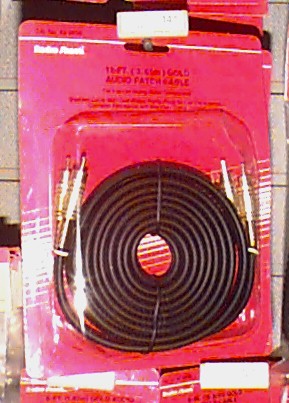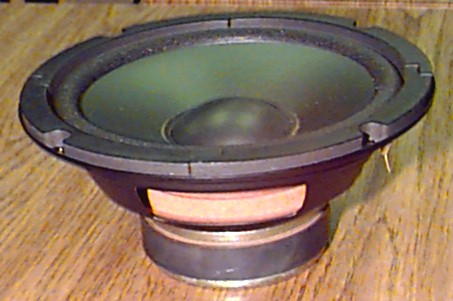
 Polymers do abound here, believe it or not. When we think of electronics we usually are thinking of materials that conduct electricity, like copper and other metals, or semi-conductors like silicon. Most polymers are insulators rather than conductors, but that doesn't mean they don't
have a place in the electronics store. The obvious place to look is on the cables behind any stereo in here. Remember that polymers tend to be good insulators, so it's natural that these cables should be insulated with polymers like polyethylene and PVC, or poly(vinyl chloride). For wires that get really hot we use insulation made from a fireproof polymer called poly(vinylidene fluoride).
Polymers do abound here, believe it or not. When we think of electronics we usually are thinking of materials that conduct electricity, like copper and other metals, or semi-conductors like silicon. Most polymers are insulators rather than conductors, but that doesn't mean they don't
have a place in the electronics store. The obvious place to look is on the cables behind any stereo in here. Remember that polymers tend to be good insulators, so it's natural that these cables should be insulated with polymers like polyethylene and PVC, or poly(vinyl chloride). For wires that get really hot we use insulation made from a fireproof polymer called poly(vinylidene fluoride).


The cases of these CD players and amplifiers are also made of plastics such as polystyrene or ABS. If you take the covers off your CD players or your computers, you'll find that inside, the circuit boards are made of epoxy resins. Here's another place where it pays to be a good insulator.
 Next we can take a look at these speakers. The cones of woofers and tweeters are often made of paper. I'm sure you've seen it before. Paper is mostly cellulose, which is one of many naturally occuring polymers. Of course, if you look at the high quality speakers like this subwoofer, then you'll find cones made of a plastic called polypropylene.
Next we can take a look at these speakers. The cones of woofers and tweeters are often made of paper. I'm sure you've seen it before. Paper is mostly cellulose, which is one of many naturally occuring polymers. Of course, if you look at the high quality speakers like this subwoofer, then you'll find cones made of a plastic called polypropylene.

These piezoelectric tweeters contain poly(vinylidiene fluoride). Poly(vinylidene fluoride) is good for use in tweeters because it will change its shape when you put it in an electric field! An alternating field makes it vibrate, and the vibration can be made to produce sound.
 Here's an assembled speaker for those who don't feel like building their own. Its cabinet is made of wood, which contains an awful lot of cellulose. The mesh fabric that covers the speaker is made of nylon, and it's stretched over a polystyrene frame.
Here's an assembled speaker for those who don't feel like building their own. Its cabinet is made of wood, which contains an awful lot of cellulose. The mesh fabric that covers the speaker is made of nylon, and it's stretched over a polystyrene frame.

Have you ever been talking on the phone, and walked too far away from the phone base, pulling it off the table? It falls to the ground with a loud thud!, but still works. That's because it's protected by a hard shell. The outside housing is made from a special kind of polystyrene, high-impact polystyrene, or HIPS. It's a graft copolymer of polystyrene with a rubbery polymer, polybutadiene. It's much less brittle than polystyrene alone. That outside housing could also be made from ABS, another kind of copolymer.
Remember old reel-to-reel tape recorders? The tape is sometimes made from polyester.

|
Return to Level One Directory |

|
Return to Macrogalleria Directory |